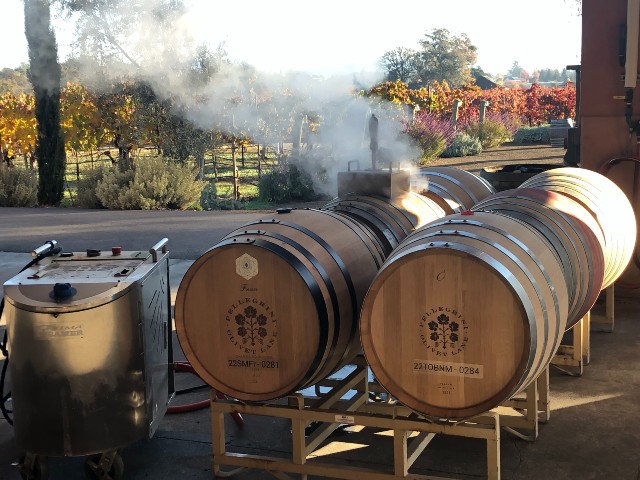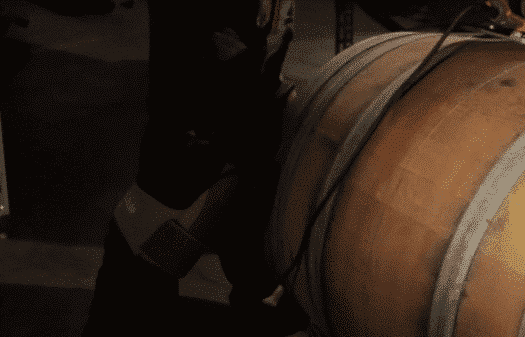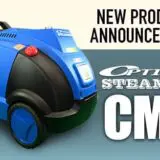Grainger Customers, Corporate, Group & Government Buyers - Learn about Wholesale Purchasing
-
Need Help? Get Support
-
Phone: 844-877-8326
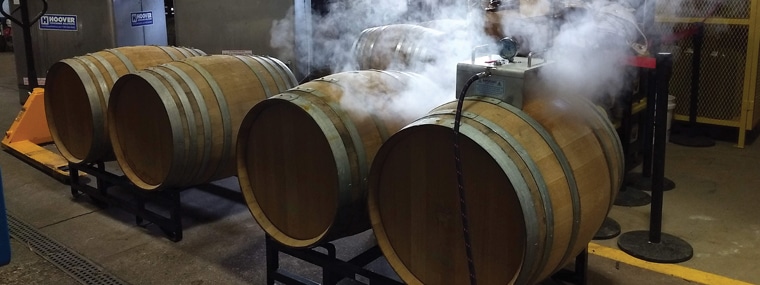
Opportunities on Tap—Cleaning Craft Breweries

A full circle takes us to the place we started, and in some ways beer brewing has come full circle. By the sixth century monasteries across the continent of Europe were making brews, using hops and malted grain (often barley). The beverages were distinctive and locally flavored. Brewers used wooden barrels for aging and storage.
(Beer and ale date back much longer than the sixth century. Fermented drinks have been part of civilizations for thousands of years, and as a point of general interest, hops are in the plant family Cannabaceae, which also includes cannabis.)
But back to the circle. Today’s craft brewers have put the wooden barrel back in use. It’s not as easy to clean as a metal keg, but the flavors encouraged and imparted by the wood container are all part of the industry.
Craft brewers accounted for 13.1 percent of the market share of beer by volume in 2021, according to the Brewers Association (www.BrewersAssociation.org), which represents small and independent brewers. That equated to 24.8 million barrels of beer and eight percent growth over the prior year.
Put simply—as industries go in 2023, craft breweries are doing well. They have sustained themselves through difficult years, and they are adding new affiliates. Such a robust and growing economic sector, with facilities that must be cleaned, signals opportunity for our industry.
“Craft breweries are present in every state and growing faster than wineries,” says Yujin Yoo Anderson, general manager at Steamericas in Gardena, CA. It’s definitely an industry that merits a look, and she puts it in context for us.
Anderson’s company and its distributors sell their Optima Steamer units and barrel steam tools for barrel steaming to craft brewers. “Just to name a few, craft breweries under Anheuser-Busch and Heineken are some of our customers, along with countless independent breweries around the country,” she says.
The move into the craft brewer niche is quite a natural transition for Anderson’s company, which first sold to wineries. “Breweries have similar cleaning challenges as wineries,” she explains.
While wineries are often regionally based around vineyards, craft breweries are widely distributed. Expertise in serving both the needs of vintners and brewers has led to multiple related opportunities. The customer base for Anderson’s company now also includes meaderies, distilleries, and cideries.
Meeting the needs of craft brewers demands as much attention to details and regulations as does cleaning any food processing facility. The Food and Drug Administration (FDA) is the regulator for both, and the oversight by the FDA raises the bar in terms of cleaning, says Anderson.
What’s the general scope of the cleaning to be done? “In addition to barrel and foeder sanitation (a foeder is essentially a very large barrel and brewery specific), stainless tanks need regular washdowns with a pressure washer and sanitization with steam or hot water,” says Anderson.
What temperature should be reached to properly sanitize barrels, foeders, and tanks? “The heat temperature range of 160°F to 180°F is known to be the best sanitizing temperature,” says Ander-son. “Certain yeast strains require a higher temperature to be eliminated,” she notes.
Anderson gives us the example of Brettanomyces (also known as Brett). The wild yeast gets deep into wood, and to eliminate it high temperature must penetrate two to five millimeters beneath the surface.
[The sentiment about Brettano-myces, which produces acetic acid and a distinctive taste—too bitter to some and too unpalatable to others—is not entirely negative. Some brewers have now incorporated the flavor it produces into their beverages.]
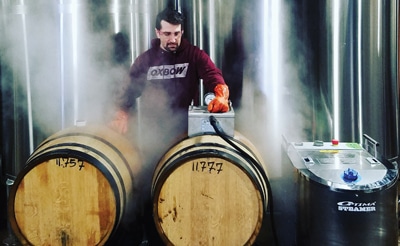
Oxbow Brewing Company.
Sanitary Matters
Barrels have come a long way from the Middle Ages when staves were bound together in a less tight manner, but they are not impenetrable. Next to metal containers, they pose many challenges for those responsible for cleaning them.
Experimentation to develop new flavors is an integral part of the craft brewer’s art, and some of that experimentation extends to using different species of wood for barrels.
Wood fiber can be densely or loosely packed. Species of oak are coveted for their dense fiber, and oak wood is common in barrels. However, even wood fiber in oak barrels can be invaded by fungi, and the yeast used in brewing is a fungus.
At the same time, yeast is part of brewing beer. Balance is everything, and proper sanitation makes it possible.
“Brewing requires the use of yeast strains which need to be carefully monitored and controlled,” explains Anderson. “Craft breweries often barrel age their brews, which requires them to procure and maintain barrels and foeders.”
Anderson points to the apparent (but tolerated) contradiction in the commitment to sanitation and the use of wooden barrels. “These wooden barrels are uneven and porous and make a perfect site for microorganisms, such as yeasts, to proliferate. Using barrels is counterintuitive to the rule of using food and beverage equipment by sanitary design.”
One recommendation by Anderson as an excellent introduction to core principles of sanitary food equipment design is The Definitive Guide to Sanitary and Hygienic Design for Food Equipment Manufacturers (www.mpofcinci.com/blog/guide-to-sanitary-and-hygienic-design/). Metalphoto of Cincinnati Inc. produced the guide.
One core principle of sanitary food equipment design is to use compatible materials throughout a facility. Another is to seal off any crevices or hollow areas. We can immediately understand the uniqueness of the craft brewery by looking at just those two principles.
Another challenge in the craft brewery setting is that as a matter of production, brewers experiment. “It has become popular for craft brewers to experiment with wild yeasts and bacterial strains,” says Anderson. She cites Brettanomyces.
Unwelcome by winemakers, Brett receives a different reception among beer enthusiasts. “Some craft brewers introduce it to their brews on purpose to make sour-tasting beer. Brett spreads fast and grows into the wood, which makes it hard to control.”
“It is extremely important for craft brewers to keep the brewery sanitary,” says Anderson. They are dealing with a product for human consumption, and there may also be crossover of equipment, specifically barrels.
“Many craft breweries buy used barrels from distilleries and wineries,” says Anderson. “In addition to cleaning and sanitizing them before use, they often find themselves in need of restoring them because there are many leak points in unmaintained barrels.”
Refurbishing barrels opens another venue for members of our industry. “The typical way of fixing a barrel is by filling up the barrel or foeder with water to rehydrate fiber and let it sit until you no longer see leakage,” says Anderson.
But there’s an alternative to that time-consuming process (it can take up to two days) that as a bonus consumes far less water. “Breweries and distilleries found that steam is a great way to do the same job faster and better while sanitizing barrels at the same time,” says Anderson.
“A single foeder holds as little as 160 gallons to thousands of gallons of liquid,” says Anderson. “You typically save 95 to 98 percent of water when using dry steam instead of water for ‘swelling’—or rehydrating—barrels. Depending on the size of the brewery and how many barrels and foeders they own, it could mean saving thousands of gallons of water on a regular basis.”
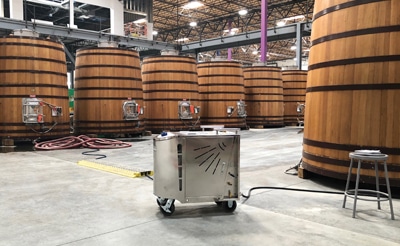
Lagunitas Brewing, a Heineken company.
Numbers and Basics
Because craft breweries make the most of wooden barrels during their processes, we have focused on those containers. But the breweries also have racks, floors, and storage areas that must be cleaned, which adds to another opportunity for power washing contractors.
According to the Brewers Association, in 2021 retail dollar sales of craft increased 21 percent to $26.8 billion, and now account for just under 27 percent of the $100 billion U.S. beer market.
The New England states and California are home to half of the top 50 craft breweries. The Great Lakes States as well as Florida, Georgia, Texas, and Colorado also have craft breweries ranked in the national top 50.
Yet opportunities are out there in every state. Equipment makers and distributors are most likely to find a niche serving craft breweries. But knowledgeable contractors can also find customers.
A good place for contractors to begin is by reading the update from the Safety Committee at the Brewers Association that was published online on January 24, 2023. Titled “Keep It Safe When Using Outside Contractors,” the focus on safety will be very familiar to contract cleaners in our industry.
In summary, owners of breweries are advised to verify insurance, licenses, and certifications of any prospective contractor. Large breweries that have their own craft brewery sub-entities will use the same tools—bid submissions, which are quite detailed and usually competitive—that other manufacturers use. The process itself should not dissuade anyone from taking a closer look at craft breweries.
For contractors, an especially good way to evaluate prospects is to take advantage of a tour of a brewery whether large or craft. If a brewery or breweries are significant contributors to the region a contractor serves, he or she should at least consider possibilities for offering services.
A contractor who is already well trained and appropriately certified in everything from confined spaces to fall protection will have a solid footing to approach owners of craft breweries about a working relationship.
Originally posted on: Cleaner Times
By Diane M. Calabrese
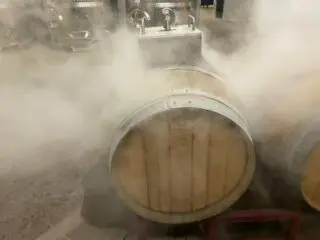
Previous Post
Winemakers in the Growing New York Finger Lakes Region Embrace Steam for Cellar Sanitation
Next Post
Accessories Catalog

